
The World’s Best-Selling Motorcycle: The Scoot of the Super Cub
Economy Technology- English
- 日本語
- 简体字
- 繁體字
- Français
- Español
- العربية
- Русский
“Start with the Cub, End with the Cub.”
One of my first memories in life from more than half a century ago is the ubiquitous presence of Honda’s Super Cub. It took on countless roles in everyone’s daily lives: delivering newspapers in the mornings and evenings, carrying soba noodles or Chinese lunch orders, and much more. Even without seeing it, you could tell a Super Cub was nearby thanks to the gentle and friendly putt-putt sound of its exhaust, or the mechanical clunk of its gears shifting. Whether in bustling cities or the quiet countryside, this extraordinary bike has seamlessly integrated into Japanese life everywhere. That is the essence of the Super Cub.
As a motor journalist, I’ve had the privilege of test-riding a range of motorcycles, both in Japan and abroad. Yet, every time I ride a Super Cub, I’m struck by rhythm of its idyllic and comforting engine, its user-friendly operation for riders of all levels, and its exceptional fuel efficiency. Tales of mechanical failure are practically unheard of with this bike. Just as anglers often say, “Start with a funa, end with a funa”—meaning that the humble crucian carp is an ideal freshwater fish to aim for as a beginning fisher, but one that also offers enjoyment to the most experienced angler—motorcyclists have long adopted a similar saying about the Super Cub: “Start with the Cub, end with the Cub.” This phrase aptly captures the Super Cub’s nature: it’s ideal for beginners to learn the fundamentals of riding and remains a reliable companion well into one’s later years.
Milestones of the Super Cub
August 1958: Launch of the original Super Cub C100
1959: Start of exports to the United States
1961: Super Cub series reaches a global production milestone of 1 million units
1964: Release of the Super Cub C65, the first model to feature an overhead camshaft
1974: Global production reaches 10 million units
1983: Super Cub 50 achieves fuel efficiency of 180 km/l
2005: Global production surpasses 50 million units
2008: Fiftieth anniversary of the Super Cub; global production surpasses 60 million units
2014: The Super Cub’s design is officially registered as a 3D trademark in Japan
2017: Global production surpasses 100 million units
2025: Scheduled end of production for the 50cc model
Source: Honda
Built by Honda Sōichiro, Sold by Fujisawa Takeo
The Super Cub was developed by Honda Sōichiro, the founder and president of Honda, and Fujisawa Takeo, the company’s head of sales. Honda, a veteran engineer, spearheaded its development, while Fujisawa marketed the vehicle and ramped up its production.
In December 1956, the two men embarked on a tour of Europe to gather ideas for creating a bestseller. At the time, scooters were popular in Japan, and Honda had introduced the Juno K in 1954, featuring a body made of fiber-reinforced plastic. However, the Juno K struggled due to insufficient power relative to its weight and frequent mechanical issues, making it far from a commercial success. During their trip, Honda and Fujisawa observed that many Europeans relied on scooters and mopeds (pedal-assisted motorbikes) as everyday transportation. Taking into account the cultural and practical differences between Europe and Japan, the pair began to envision an ideal small motorcycle tailored to the needs of Japanese riders.
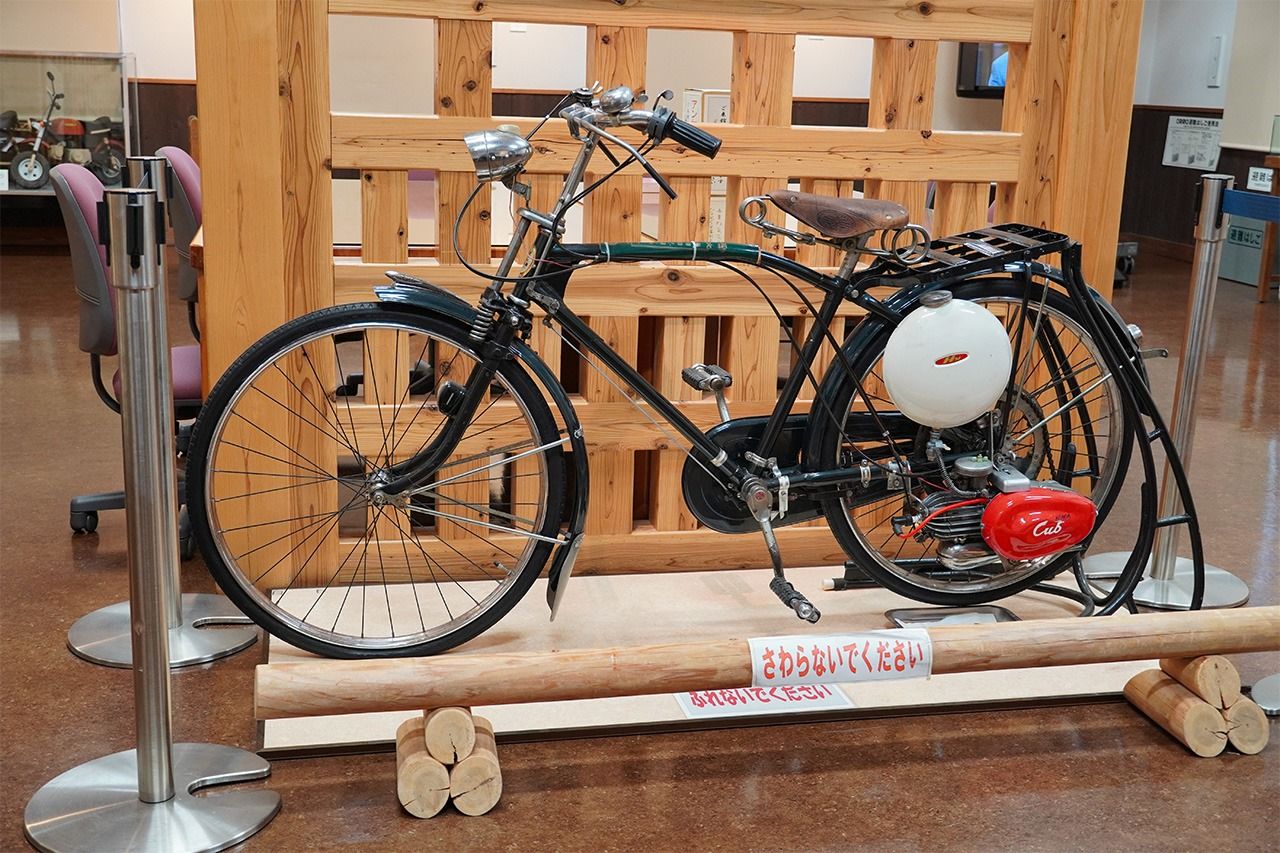
The Cub F released by Honda in 1952, an auxiliary engine for bicycles, featuring a white fuel tank and a red engine that became widely beloved. (© Ōya Yūichi)
The concept the two innovators narrowed down for their new product was twofold: First, it should be possible for a delivery worker carrying soba noodles to ride with one hand, and second, it should be suitable for women wearing skirts.
Immediately after returning from Europe in early 1957, Honda personally took charge and began developing the engine. At the time, most motorcycle engines were lightweight, simple, and based on two-stroke designs, which offered high power output. However, Honda opted for a four-stroke engine, which excelled in fuel efficiency and minimized oil spatter. To enhance usability, the engine was mounted as low as possible to make the bike easy to straddle, and a centrifugal automatic clutch was developed, eliminating the need for lever operation with the left hand. The bike had a 50cc engine with a maximum output of 4.5 horsepower. By comparison, Honda’s earlier 50cc two-stroke Cub F, which was an auxiliary engine for bicycles, produced just 1 horsepower—meaning the new engine delivered more than four times the power.
Various ideas were brought to life in the design of the Super Cub’s body. The optimal tire diameter was deemed to be 17 inches, given that only about 10% of roads in Japan were paved at the time and taking into account the generally smaller stature of Japanese riders. However, this size did not exist domestically, prompting a frantic search for a tire manufacturer willing to produce it in large quantities. The Super Cub’s styling was designed with these 17-inch tires in mind. The elegant S-shaped frame that has become synonymous with the Super Cub might never have come into existence if no company agreed to produce the tires to accompany it.
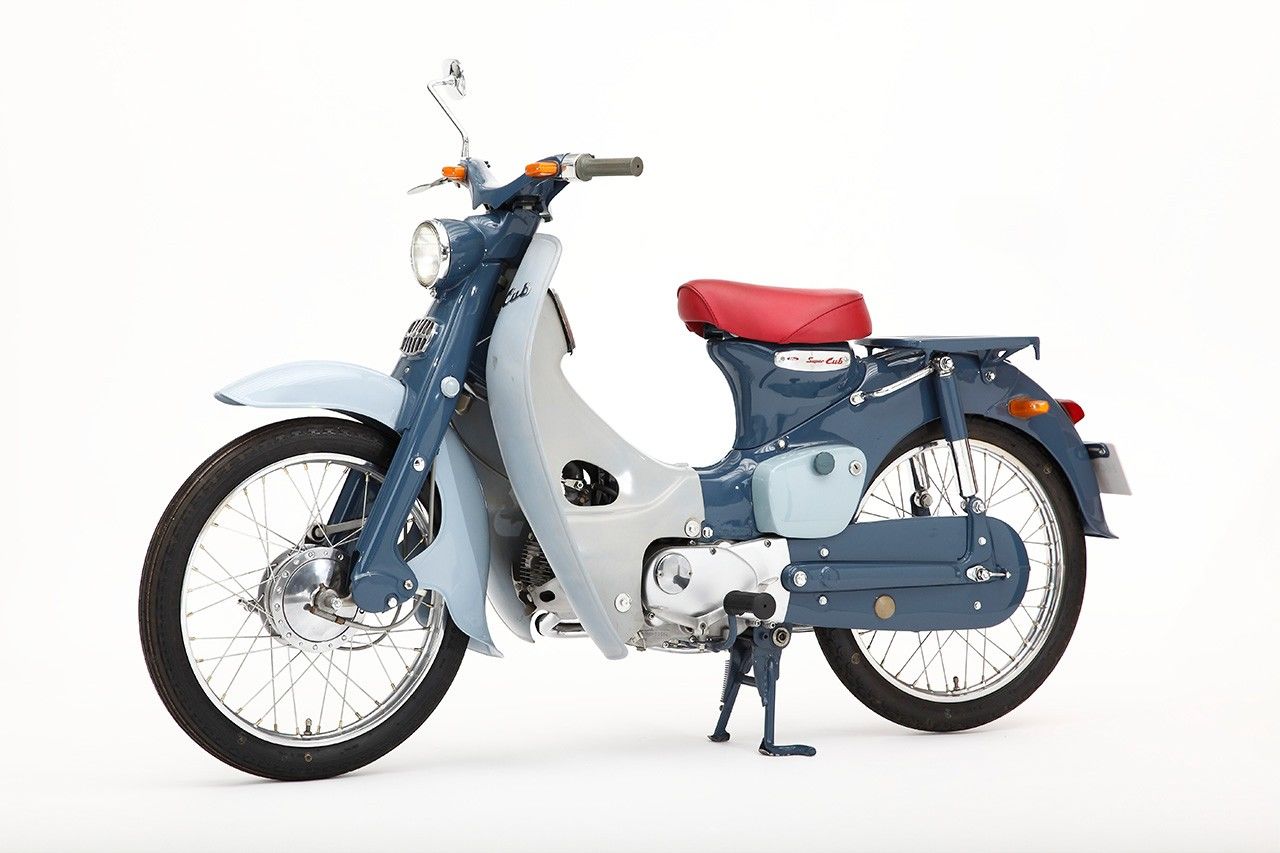
The first Super Cub, the C100, was released in August 1958. At the time, the average starting monthly salary for a company employee was about ¥8,500, yet the Super Cub was priced at ¥55,000. Despite this, it sold like hotcakes. (Courtesy of Honda)
The distinctive leg shield, which covers the rider’s lower body, was designed to prevent mud splatter from the front wheel. It was made from lightweight polyethylene resin. At the time, manufacturers specializing in plastics had never attempted molding such a large part, but Honda agreed to supply the molds, enabling mass production of the leg shield.
Named the Super Cub C100 to signify its superiority over the earlier Cub F auxiliary engine, the new model became an instant hit upon its release in August 1958. Back then, total monthly sales of all motorcycles in Japan were about 40,000 units. However, Fujisawa boldly declared, “We will sell 30,000 Super Cubs per month.” Remarkably, by its third year, annual production had skyrocketed to about 560,000 units, far exceeding Fujisawa’s ambitious statement.
Expanding to the World After Success in America
Two years before the Super Cub was launched, Fujisawa had already begun researching overseas markets. At the time, annual motorcycle sales in Europe were around 2 million units, while in the United States, the figure was just 60,000. In America, motorcycles were strongly associated with outlaws, and the market was dominated by large-displacement models from brands like Harley-Davidson and Triumph.
Although challenges were expected, Fujisawa believed that achieving success in the United States—home to the world’s strongest purchasing power—would yield significant returns and serve as a springboard for global expansion. He decided that the United States would be Honda’s first major international endeavor. Following the release of the Super Cub in Japan, Honda established American Honda Motor in Los Angeles in 1959. However, with a lineup of just a handful of models, early sales results were dismal.
Amid this struggle, the turning point came with the Super Cub C100 (known as the Honda 50 in North America). While it gained popularity in Japan as a practical vehicle for deliveries and commuting, in the American market, it earned high praise as a recreational vehicle, often carried in the beds of pickup trucks or inside RVs and used at destinations.
Analyzing market trends, American Honda expanded its sales channels beyond traditional motorcycle dealerships to include fishing tackle stores and sporting goods shops. The company also launched aggressive advertising campaigns in magazines and newspapers. These efforts paid off, and by 1962, annual sales had surpassed 40,000 units in the US market.
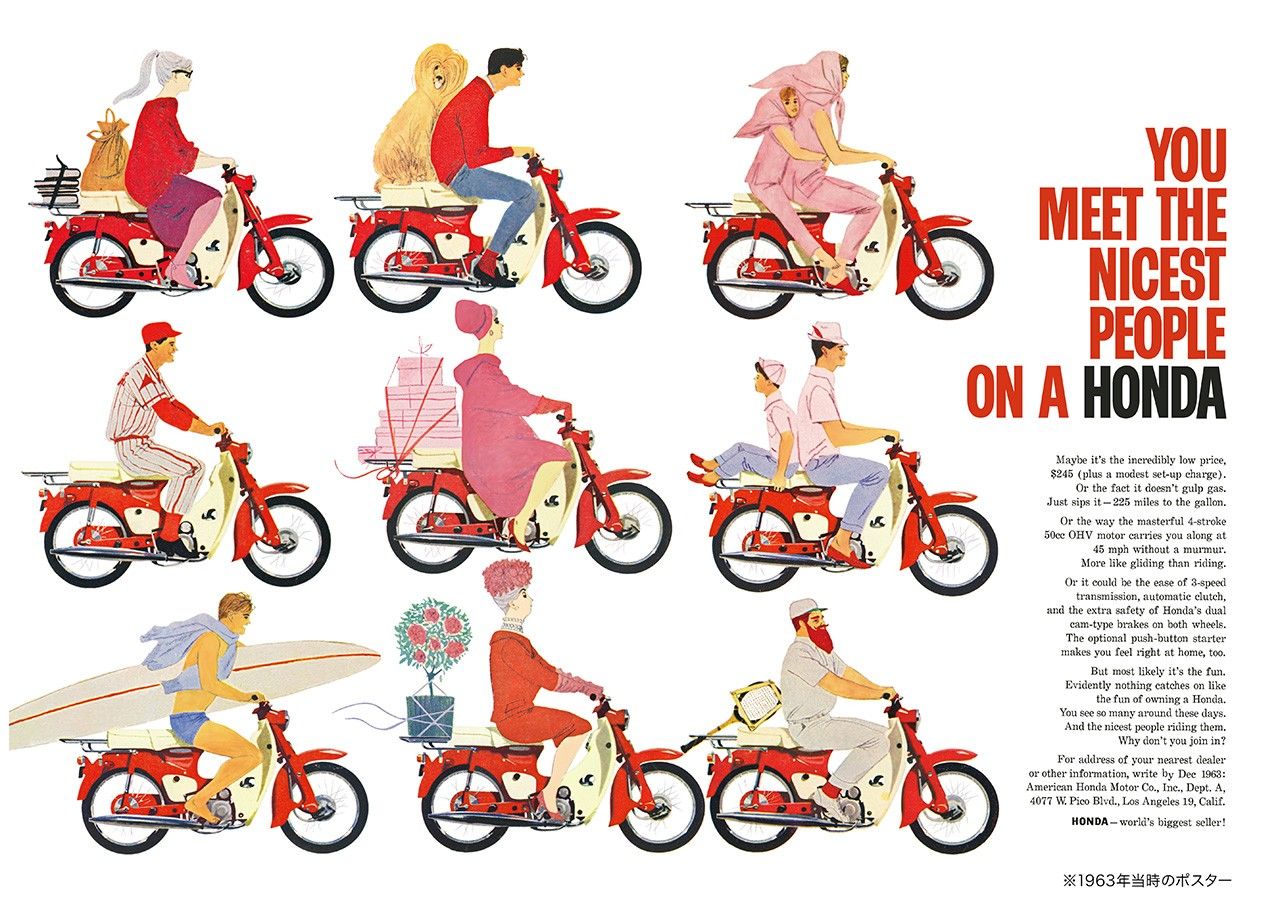
In 1963, Honda launched its iconic “Nicest People” campaign in the United States. The advertisements, which appeared regularly in prestigious magazines such as Time, Life, Look, and the Saturday Evening Post, began in print and expanded to television commercials in 1964. (Courtesy of Honda)
The campaign’s slogan, “You Meet the Nicest People on a Honda,” accompanied by illustrations showcasing various ways to use the bike, garnered widespread acclaim. It successfully transformed the motorcycle’s image in the United States from an outlaw’s vehicle to a fun and convenient mode of transportation that enriched daily life. The Honda 50 became a cultural phenomenon in America as a result.
Around the time of this American success, Honda also began producing the Super Cub overseas, adhering to its corporate philosophy of “producing where there is demand.” The company established factories in Taiwan in 1961, Belgium in 1963, and Thailand in 1967. Today, the Super Cub is manufactured at 10 production sites across 9 countries.
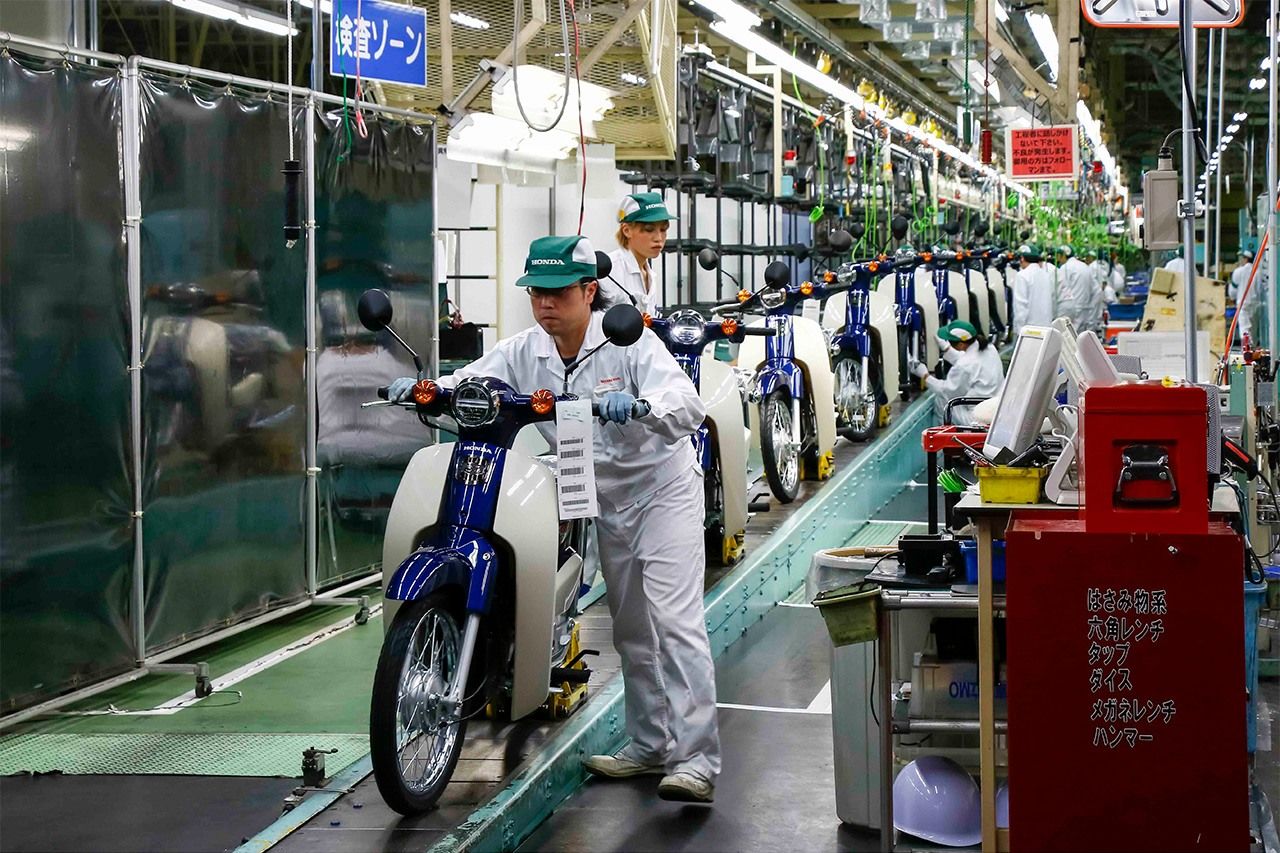
Honda’s Kumamoto Factory, where Super Cubs for the Japanese market are produced. (Courtesy of Honda)
Evolution and Growth Across the Globe
In October 2017, almost six decades years after the debut of the C100, the Super Cub series reached a global production milestone of 100 million units, setting a world record for a single motorcycle series. Cumulative production has now surpassed 110 million units.
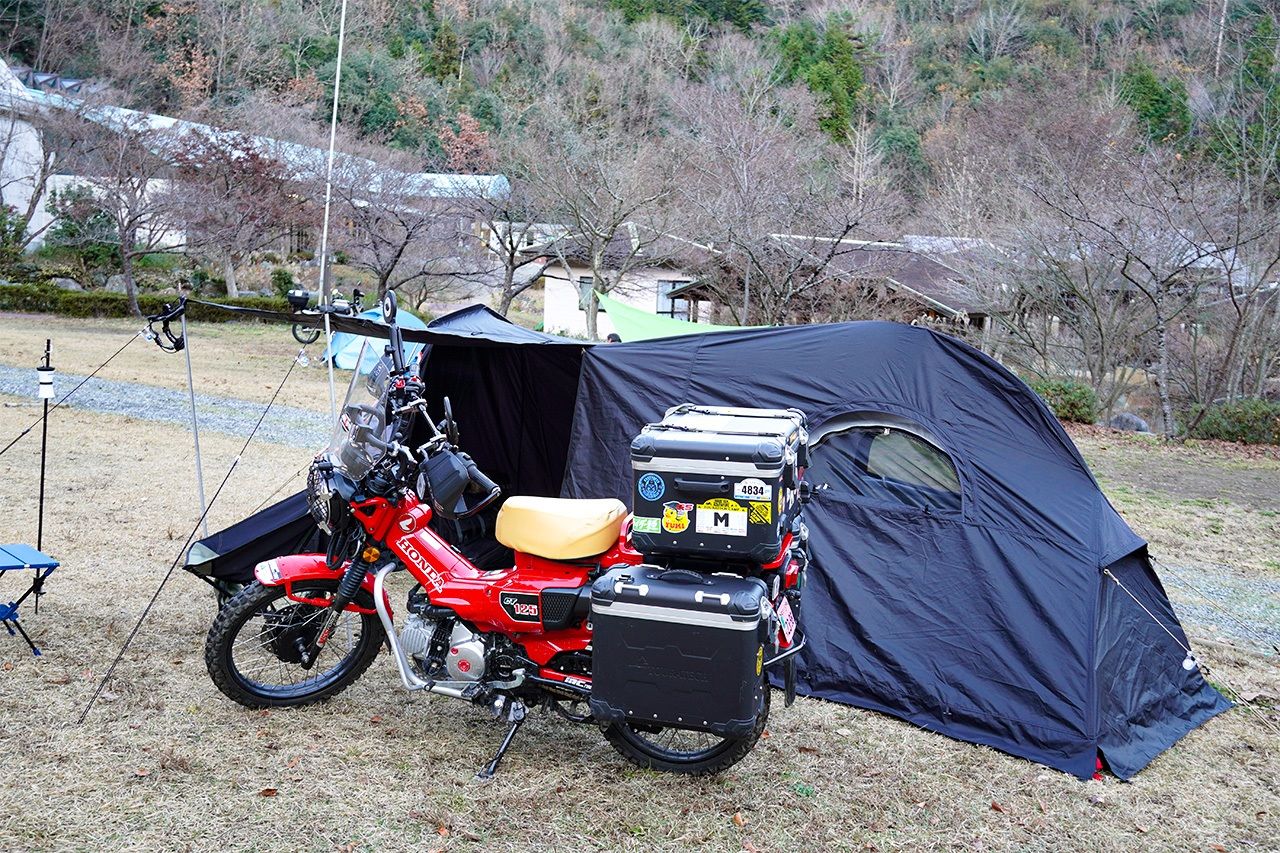
The CT125 Hunter Cub, one of the best-selling bikes in Japan’s 125cc class. Its rear cargo space makes it popular among users for camping and touring. (© Ōya Yūichi)
There are numerous variations of the Super Cub tailored to the needs of different countries. For instance, as early as 1961, Honda showcased a newspaper delivery version of the C100 at a domestic motor show in Japan. In the same year, the US market saw the release of the CA100T Trail 50, designed for off-road riding.
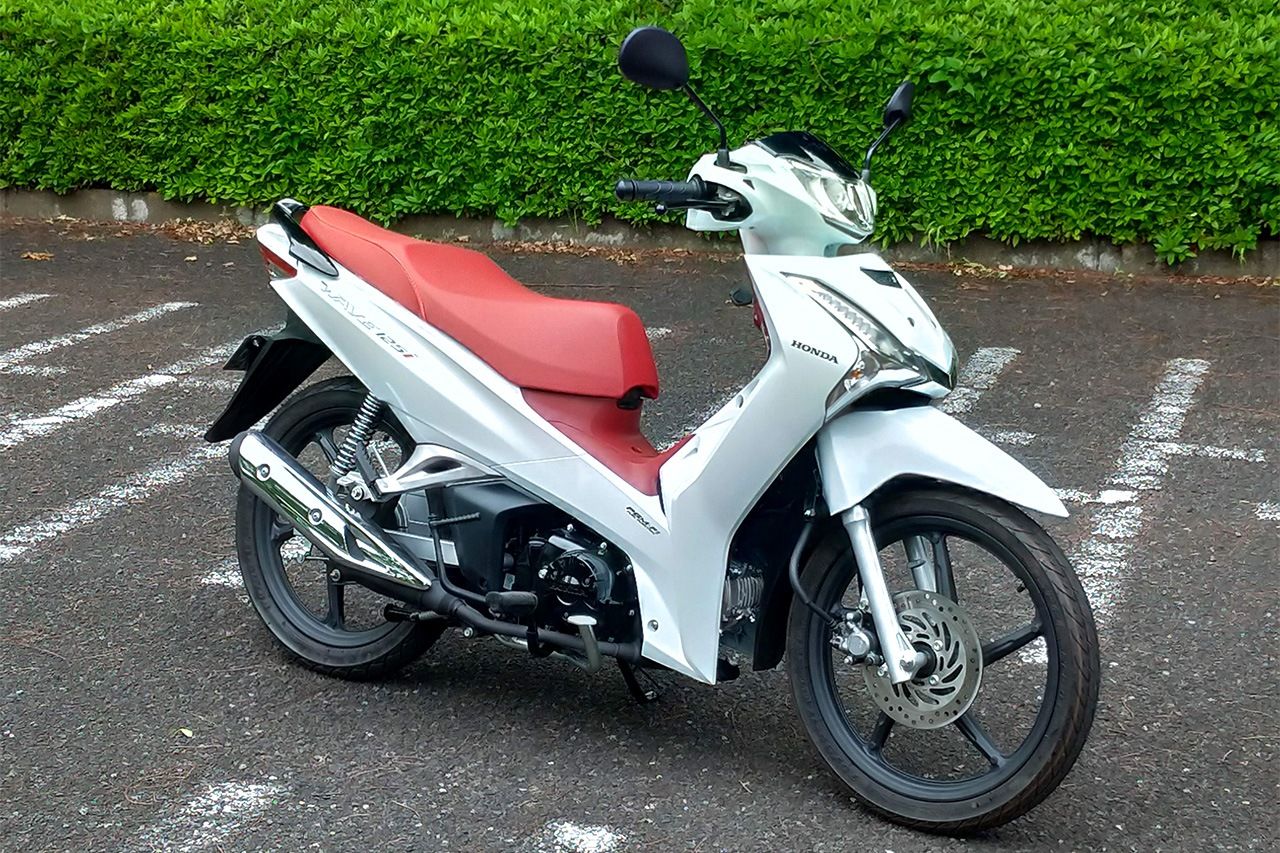
In 2010, Honda launched the Wave 110i AT in Thailand, equipped with an automatic transmission similar to that of scooters. The Wave series, first introduced in Thailand in 1995, became a hit thanks to its modern and stylish design. (© Ōya Yūichi)
The 1995 debut of the Wave in Thailand marked the beginning of its success, not only across Southeast Asia but also in South America. In Brazil, the Biz series was introduced in 1998, addressing cultural preferences that deemed carrying luggage on a motorcycle as unattractive. Featuring a large storage compartment under the seat, the Biz became a staple in the South American market.
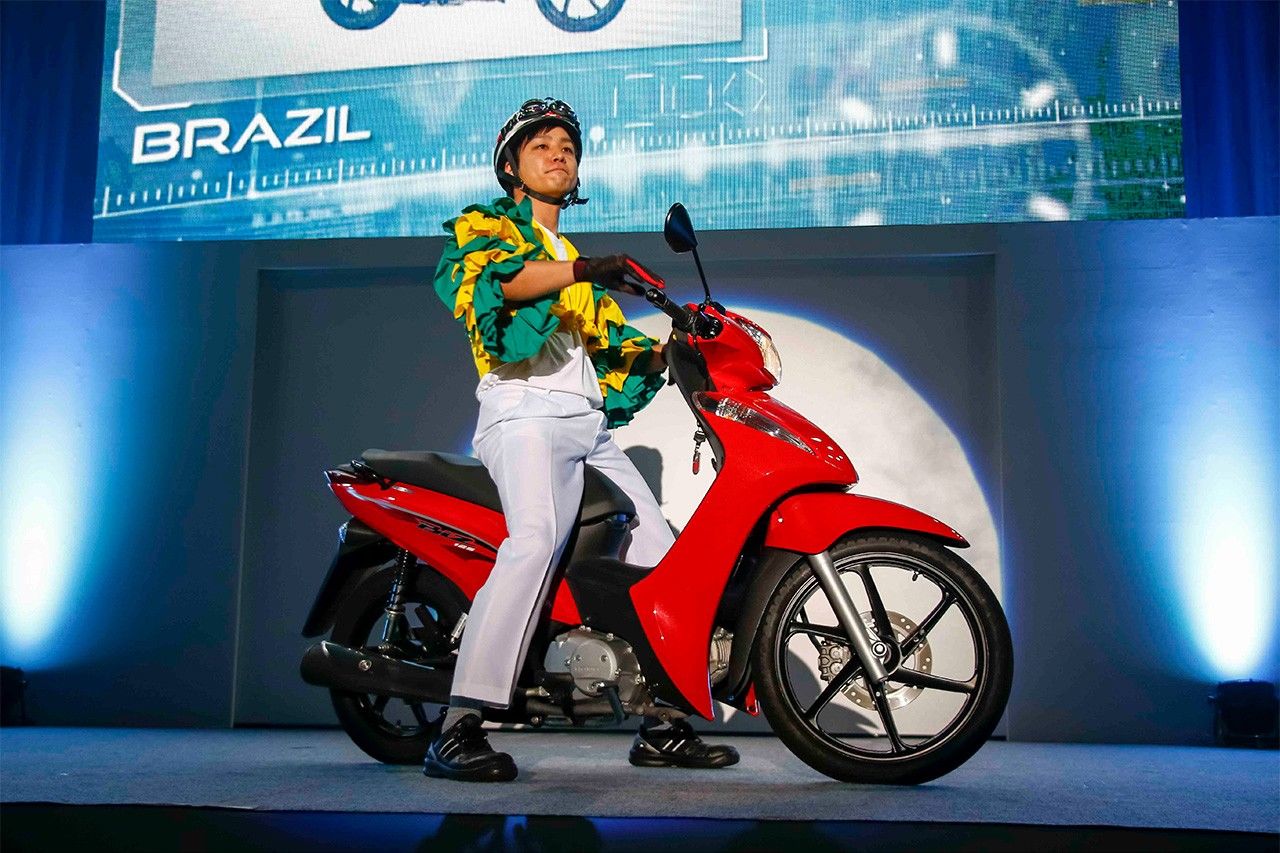
In 2017, a ceremony was held to commemorate the milestone of 100 million Super Cubs produced worldwide. The event showcased Super Cub models manufactured in various countries, including Brazil’s Biz 125. (Courtesy of Honda)
In Japan, stricter emissions regulations set to take effect in November 2025 will prohibit the production of motorcycles with engine displacements of 50cc or less. In response, Honda plans to release a limited-edition Final Model in December 2024 and conclude production by May 2025. However, production and sales of the 110cc models will continue, ensuring that the Super Cub’s legacy does not end. Easy to ride, convenient, economical, and exceptionally durable—the Super Cub remains a global icon. The next time you spot one on the streets anywhere in the world, remember it is one of over 110 million produced.
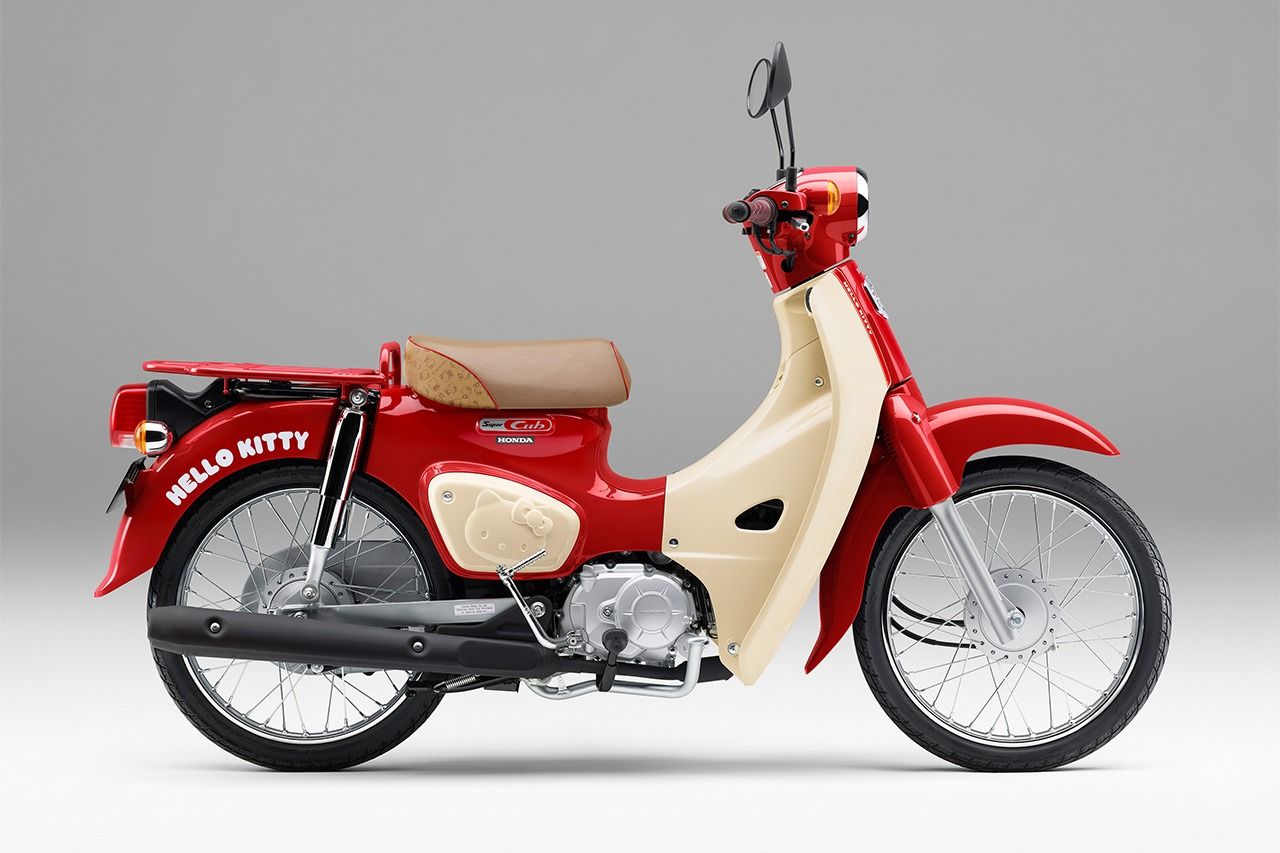
Honda has released collaboration models with other companies on several occasions, including a special edition to commemorate the 50th anniversary of Sanrio’s popular character Hello Kitty. (Courtesy of Honda)
(Originally published in Japanese. Banner photo: Ōya Yūichi riding the updated Super Cub 110 model introduced in 2022. This latest version complies with the newest emissions regulations and features tubeless tires, making puncture repairs easier. Courtesy of Motor-Fan Bikes.)

